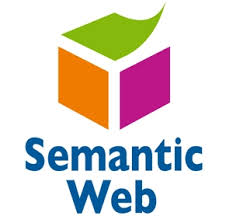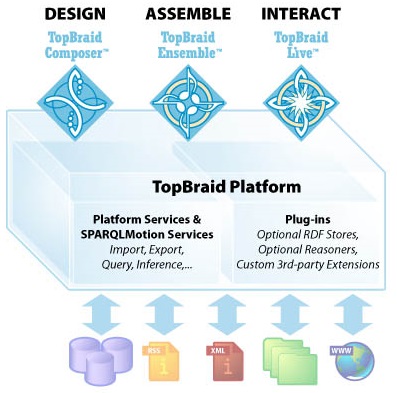PMDA and ESTCA are powered by the Technology of the Semantic Web.
This new technology enabled PMDA and ESTCA to implement a pure MDA approach by providing the following features:
- Semantic expressivity and formal precision enables reliable aggregation of models using a consistent approach;
- The ability to capture and relate distributed models at multiple levels and from multiple viewpoints supports the appropriate use of local vocabularies while preserving integrity of the chosen framework;
- Rigorous typing, categorization and consistency checking ensures conformance to the reference frameworks and makes it possible to break large models into smaller interconnected modules;
- Reuse, substitution and extension become possible using the web as an integration and knowledge discovery platform;
- Industry standard inference engines offload significant portions of the business logic and its processing needed to implement management reports and analytics, where models are semantically connected.
![]() To use all the power of the Semantic Web, PMDA is constructed and deployed using Top Braid Suite that is provided by Top Quadrant.
To use all the power of the Semantic Web, PMDA is constructed and deployed using Top Braid Suite that is provided by Top Quadrant.
The PMDA OWL meta-models are constructed using the Top Braid Composer. TopBraid Composer is a modeling tool and an IDE for enterprise solutions. It provides comprehensive support for modeling ontologies and data, connecting data sources, designing queries, rules and semantic data processing chains, and developing applications that work with semantic models.
Download TopBraid Composer free edition.
The PMDA web application is implemented using SPARQL Web Pages (SWP) and Top Braid Ensemble. SPARQL Web Pages (SWP) is a framework for building web interfaces based on Linked Data and Semantic Web standards. SWP is a unique technology that makes it very easy to build applications that interact with RDF data. With SWP, user interface snippets are attached directly to class definitions in ontology models. The framework can then automatically discover and select the most appropriate user interface for any given resource. User interface code becomes extremely flexible, modular and model-driven.
TopBraid Ensemble is a web-based application assembly toolkit for rapidly creating model-driven applications. With TopBraid Ensemble, you can quickly assemble Rich Internet Applications out of pre-built application components and templates.
The PMDA application server is deployed using Top Braid Live. TopBraid Live is an enterprise SOA-capable Semantic Web application and Linked Data platform. It is a server for deploying flexible, model-driven applications and dynamic, on-demand integration of data from diverse sources.
Most of PMDA Agents and the ESTCA engine are implemented using SPARQL Motion. SPARQLMotion is a visual scripting language and engine for semantic data processing. Scripts implementing sophisticated data services and processing such as queries, data transformations and mashups can be quickly assembled with easy to use graphical tools. This can save weeks of development time. Each script can be defined as a REST Web Service returning streams of data (XML, RDF,JSON, text) or user interfaces.
The PMDA Rules are implemented using SPIN. SPIN is a standards-based way to define rules and constraints for Semantic Web data. Using SPIN one can express business rules in SPARQL and execute them directly on any RDF data and models. SPIN is an open specification that has been submitted to the World Wide Web Consortium (W3C) and can be viewed on the W3C site. SPIN combines concepts from object oriented languages, query languages, and rule-based systems to describe object behavior on the web of data. One of the basic ideas of SPIN is to link class definitions with SPARQL queries to capture constraints and rules that formalize the expected behavior of those classes.
PMDA also uses the top braid inference engine TopSPIN.
Even though PMDA is implemented using Semantic Web, the Business Services modeled in PMDA can be implemented and deployed using any available technology.
IMPORTANT TO NOTE: The PMDA Framework is developed using its own technology. The Framework domain and its constituents objects (Core Capabilities, Requirements, Programs, Models, etc) are Defined using PCIML, Designed using PPIML and Deployed using PPSML. The models are then accessed by agents implemented using SWP and SPARQL Motion Scripts that communicate with the ESTCA Engine using the SPOP protocol.

